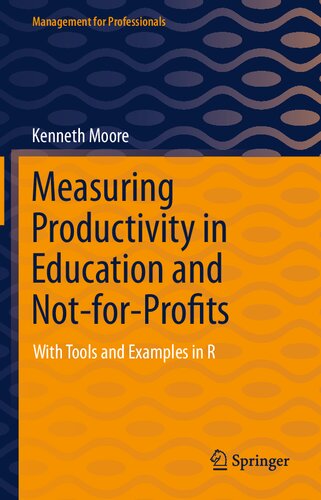

Most ebook files are in PDF format, so you can easily read them using various software such as Foxit Reader or directly on the Google Chrome browser.
Some ebook files are released by publishers in other formats such as .awz, .mobi, .epub, .fb2, etc. You may need to install specific software to read these formats on mobile/PC, such as Calibre.
Please read the tutorial at this link: https://ebookbell.com/faq
We offer FREE conversion to the popular formats you request; however, this may take some time. Therefore, right after payment, please email us, and we will try to provide the service as quickly as possible.
For some exceptional file formats or broken links (if any), please refrain from opening any disputes. Instead, email us first, and we will try to assist within a maximum of 6 hours.
EbookBell Team

4.3
68 reviewsThis book takes the reader through real-world examples for how to characterize and measure the productivity and performance of NFPs and education institutions―that is, organisations that produce value for society, which cannot be measured accurately in financial KPIs. It focuses on how best to frame non-profit performance and productivity, and provides a suite of tools for measurement and benchmarking. It further challenges the reader to consider alternative and appropriate uses of quantitative measures, which are fit-for-purpose in individual contexts.
It is true that the risk of misusing quantitative measures is ever-present. But does that risk outweigh the benefits of forming a more precise and shared understanding of what could generate better outcomes? There will always be concerns about policy and performance management. Goodheart’s Law states that once a measure becomes a target, it is no longer a good measure. This book helps to strike a meaningful balance between what can be measured, what cannot, and how best to use quantitative information in sectors that are often averse to being held up to the light and put on a scale by outsiders.